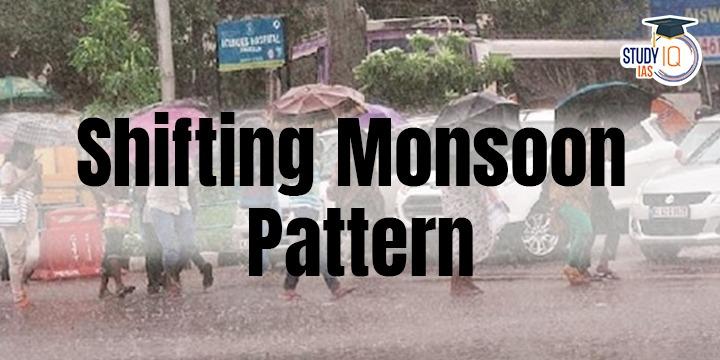Table of Contents
How has the Indian Monsoon been this year?

An overview of How Indian Monsoon Patterns have Changed in the Recent Times
- Surplus rains: Since 2019, Indian Monsoon has returned surpluses, with the exception of a slight dip last year.
- The June-September rainfall in 2019 was 10% more than the 88 cm that India usually gets.
- In 2020, Indian Monsoon saw 9% more rain with August registering 27% more rain.
- The rainfall over India as a whole, in 2021, was 1% less than normal though rainfall in September was a remarkable 35% above what is usual.
- Delayed Indian Monsoon withdrawals: In recent years, monsoon withdrawal commencement has been delayed, tending towards either the end of September or early in October. The normal date for the commencement of the withdrawal is September 17.
- According to IMD records for 2012-2022, monsoon withdrawal from northwest India took place in the first half of September only during three years.
What is the Indian Monsoon Withdrawal?
- Indian Monsoon withdrawal begins with the cessation of rainfall activity over northwest India for five straight days, an anticyclone establishing itself in the lower troposphere and a marked reduction in moisture content.
- Withdrawal of Indian Monsoon starts from the last State where monsoon reaches, which is Rajasthan.
- Withdrawal season continues from mid-September to almost end of October. It is then replaced by the retreating, or northeast monsoon in November
Factors Responsible for the Changing Indian Monsoon Patterns
- Climate Change: As the climate warms, increasing water vapour transport from the ocean into land increases. This triggers changes in large-scale circulations, which influence the strength and extent of the overall monsoon circulation.
- Atmospheric Teleconnections: Due to rising temperatures, there has been an increase in the occurrence of atmospheric teleconnections such as ENSO, Indian Ocean Dipole (IOD) and Madden-Julian Oscillation (MJO), which are directly impacting the monsoonal circulations.
- El Niño–Southern Oscillation (ENSO) is an irregular periodic variation in winds and sea surface temperatures over the tropical eastern Pacific Ocean, affecting the climate of much of the tropics and subtropics. The warming phase of the sea temperature is known as El Niño and the cooling phase as La Niña.
- El Nino leads to a weaker monsoon whereas La Nina favours Indian monsoon.
- The Indian Ocean Dipole (IOD), also known as the Indian Niño, is an irregular oscillation of sea surface temperatures in which the western Indian Ocean becomes alternately warmer (positive phase) and then colder (negative phase) than the eastern part of the ocean.
- During the period of positive IOD, the Indian summer monsoon rainfall is considerably good as compared to the negative IOD period.
- Madden-Julian Oscillation (MJO) is an eastward moving disturbance of clouds, rainfall, winds, and pressure that traverses the planet in the tropics and returns to its initial starting point in 30 to 60 days, on average.
- The impact of MJO on Indian monsoon depends on its periodicity. Shorter the cycle of MJO, better the Indian Monsoon.
- If it is nearly 30 days then it brings good rainfall during the monsoon season.
- El Niño–Southern Oscillation (ENSO) is an irregular periodic variation in winds and sea surface temperatures over the tropical eastern Pacific Ocean, affecting the climate of much of the tropics and subtropics. The warming phase of the sea temperature is known as El Niño and the cooling phase as La Niña.
- If it is above 40 days then MJO doesn’t give good showers and could even lead to a dry monsoon.
























 WhatsApp
WhatsApp